When California Senate Bill 493 was signed into law on October 1, 2013, it heralded a new era recognizing the integral role pharmacists increasingly play in patient care. It underscored what implementation of the Affordable Care Act was already making clear: that including pharmacists as valued members of the healthcare team not only helps contain costs but, more importantly, also ensures that patients receive optimal care and better overall health outcomes.
But passage of SB 493 raised additional questions—from who is responsible for implementing the new law to how an advanced practice pharmacist (APP) will be defined. To address these issues, USC Mann surveyed a group of experts—all of whom were actively involved in helping secure the bill’s passage and/or have long been advocates of provider status for pharmacists. Below, these leaders share their insights on the likely next steps for this landmark legislation.
Who is responsible for implementing SB 493?
While a momentous accomplishment, the law’s passage actually triggers an even more complicated process to ensure success for both providers and patients—one that begins with the California Board of Pharmacy.
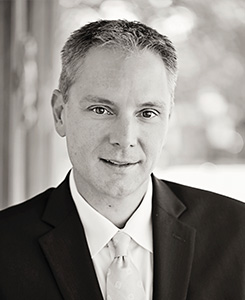
CEO, California Pharmacists Association
“The Board of Pharmacy must review the legislation and determine where additional regulations are necessary to implement the measures called for in the bill,” says California Pharmacists Association (CPhA) CEO Jon Roth. He explains that the Board of Pharmacy’s members must also work with the state Board of Medicine to establish protocols for allowing pharmacists to provide such services as hormonal contraception and smoking cessation. In addition, the Board of Pharmacy will have to create an application process for the APP credential.
While the board is officially responsible for implementing SB 493, the legislation’s ultimate success is up to pharmacists themselves, notes Sarah McBane, CPhA president-elect. “California pharmacists will be the ones providing patient care under SB 493, so, in that sense, pharmacists will be the ones implementing it.”
Current CPhA President and USC School of Pharmacy Assistant Dean for Curriculum and Assessment Kathleen Hill Besinque agrees, adding: “The professional organizations have an unofficial role that is critical to the success of the bill’s provisions.”
How is APP defined, and will all pharmacists need the same additional training?
“APPs are pharmacists who meet requirements specified by SB 493 that qualify them for unique authorities such as performing patient assessments, referring patients to other providers and engaging in collaborative drug therapy management outside of institutional settings,” says Steven Chen, chair of the Titus Family Department of Clinical Pharmacy and Pharmaceutical Economics & Policy at USC.
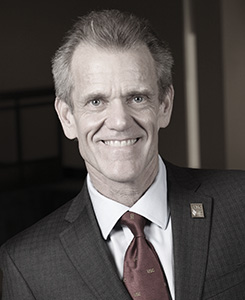
Dean, John Stauffer Decanal Chair, USC School of Pharmacy
“There are three criteria for being an APP,” explains USC School of Pharmacy Dean R. Pete Vanderveen. “One is a board-approved credential such as the established Board of Pharmaceutical Specialties’ Credentials. I believe APhA is interested in and may have licensed Canada’s ADAPT Program, a well-studied and documented 20-week, practice-based program. ADAPT, along with other programs that several schools are developing, may be approved at the board’s discretion. Another criterion is documented work for a year under a pharmacist providing direct patient care through a collaborative agreement with a physician. The third is to complete a patient care residency with the required hours of direct patient care experience.”
Roth adds, “Pharmacists may have an array of training and experiences, but need only meet two of these criteria in order to submit their application to the Board of Pharmacy for APP recognition.”
Ryan Gates, Kern Medical Center senior clinical pharmacist and residency program director, believes the issue is far from resolved. “The exact criteria are available for review in the bill, but the Board of Pharmacy must now provide guidance on the objective criteria that certification programs must meet in order to qualify for APP,” he says. “This is a source of much debate.”
McBane notes that the training will to some extent depend on the individual pharmacist’s practice area. “For example, a pharmacist practicing in an oncology clinic may pursue a certification in oncology or have a year of collaborative practice in a cancer clinic,” she says. She hopes that the Board of Pharmacy will recognize multiple certification opportunities so that pharmacists across practice settings will be recognized as APPs able to provide patient care.
What is the timeframe for establishing APP criteria and for providing access to practicing pharmacists who want to pursue the credential?
The process is ongoing, according to Besinque, who expects “at least some APP criteria to be available in early 2015—with modifications over time.”
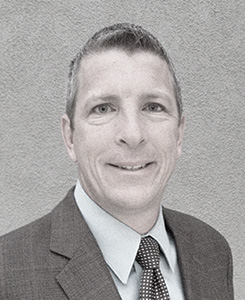
Senior Clinical Pharmacist, Residency Program Director, Kern Medical Center
Gates believes that official applications for APP licensure could take until mid- to late 2015 to appear. “I’d rather it take a bit longer but get done right rather than rush through, have it done wrong and hamstring our efforts to safely expand access to quality care.”
Chen says, “Once the Board of Pharmacy provides specific details about APP standards—such as which current certifications apply or what the requirements are for new certification courses—then pharmacists can begin pursuing the designation.”
Will non-APPs face second-class status in the profession?
According to Besinque, the answer is no. “Pharmacists can perform a number of activities included in the legislation without being an APP,” she says.
Roth points out that the APP is a credential and not a second licensure category. Through the legislation, “all pharmacists … received an expanded scope of practice, which will allow them to provide additional services to their patients.”
Vanderveen agrees but adds, “Since there is little profit left in dispensing medications, I believe enlightened pharmacists in every setting should seize this opportunity to be necessary members of the healthcare team.” He insists that only this will “prevent community pharmacy from going the way of bank tellers” and become obsolete.
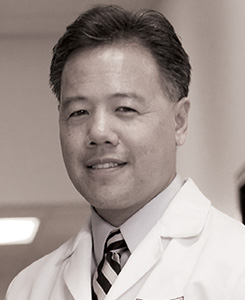
Chair of Titus Family Department, Hygeia Centennial Chair in Clinical Pharmacy, USC School of Pharmacy
Does SB 493 give community pharmacists access to electronic medical records?
“Pharmacists now have permission to share in health information exchange, but sharing is not mandated,” says Chen.
“Ideally, community pharmacists will partner with accountable care organizations [ACOs], health systems and so on to get fully integrated into the electronic health record system,” adds Vanderveen. “Mobile apps are being developed that could potentially bridge the gap until full integration is a reality.”
Will future students have the training needed for designation as APPs upon graduation, or will residencies be required?
Pharmacy graduates will not automatically be eligible for the APP credential upon graduation, says Roth. Since only two of the three criteria for APP status must be fulfilled, a residency will not be required. But, he adds, students would “need to complete a certificate in a relevant area of practice and have a year of experience performing APP duties in collaboration with a physician, another APP or a health system.”
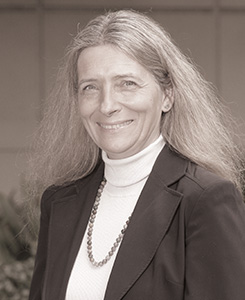
Assistant Dean for Curriculum and Assessment, Director of Experiential Programs
USC School of Pharmacy
Can pharmacists serving as healthcare providers now bill for services?
“Any pharmacist who performs a covered service can bill,” says Besinque. “Getting paid, however, requires being included in the network of providers—which they can do.”
According to Roth, a taskforce of payers and pharmacists is exploring methods for allowing pharmacist compensation for services such as those delineated in SB 493.
Vanderveen adds: “Those on the cutting edge will either be employed by healthcare systems or will find ways to bill through their partnering physician groups or insurance providers on a contractual basis. Eventually, the hope is that pharmacists will have their own billing codes.”
Chen believes that, instead of this question, pharmacists should be asking, “What is the value proposition that my services can bring to hospitals, healthcare providers and payers in the health system?” He reminds us, “The primary intent of the bill is to give pharmacists the opportunity to improve medication-related outcomes and address problems created by the growing primary care shortage. This requires collaboration and alignment with the needs and struggles of payers and healthcare providers, which will in turn lead to payment for services.”
Who is responsible for establishing and implementing the billing structure?
“Each person who wants to bill is responsible,” says Besinque, who points out that billing matters are beyond the legislature’s purview.
“MediCal will help set precedence,” says Gates. “But as healthcare shifts to managed care, each entity will have its own way of contracting for services—fee-for-service, capitation, capitation with risk for outcomes/quality, etc.
Do pharmacists now need to obtain national provider identification numbers?
All of our experts agreed that the answer is “yes.” “Many payers use these,” adds McBane.
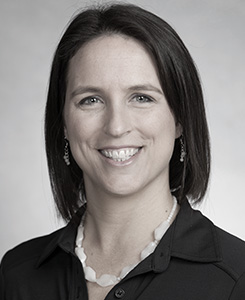
Health Sciences Associate Clinical Professor, University of California – San Diego
President-elect, California Pharmacists Association
How is APP likely to roll out in community settings?
“Specific implementation will vary from pharmacy to pharmacy, and probably from community to community, depending on the needs of patients in each setting,” says McBane. “Regions of California that lack adequate supply of primary care physicians—which is actually most of the state—are regions where an APP in the community pharmacy may have the most benefit to patients.”
Roth considers the “rapid public acceptance of pharmacy-delivered immunizations” to be a harbinger of the legislation’s future success. “Both chain drugstores and independent community pharmacists can benefit their patients by expanding the number and type of clinical services they offer. These services will also add to the value of the pharmacist and reduce the financial burden on pharmacies that have been solely reliant on dwindling product-based sources of revenue.”
Why should an independent pharmacist pursue this path?
“Because it makes for good patient care and good business sense,” says Besinque. But, she adds, resources to aid in deciding this course are not yet available.
How will SB 493 foster interdisciplinary collaboration?
“To my knowledge, all health professional schools are mandated to include interprofessional education and training for their students,” says Vanderveen. “Team-based care is the most effective and efficient way of providing quality healthcare.”
Collaboration is crucial to the legislation’s framework, adds Roth. “As the overall healthcare delivery system continues to evolve, we believe pharmacists will gain greater footing into integrated care systems such as ACOs, managed care plans and others, and will be generally recognized for the knowledge they contribute to the team.”
What’s next?
“The hard work lies ahead,” says Chen. “Pharmacists must continue to refine collaborative practices and share the results with all stakeholders. The profession needs to gear up education efforts aimed at senior leaders of health plans, medical providers and other healthcare professions and agencies to ensure that everyone understands the purpose and value that pharmacists bring to the healthcare team through SB 493.”
“We want patients asking ‘Where’s my pharmacist?’ because they expect to have us on their care team,” says McBane. Gates agrees—and adds a rallying cry: “The ‘holy grail’ is federal provider status. Fight on my friends, fight on!”

